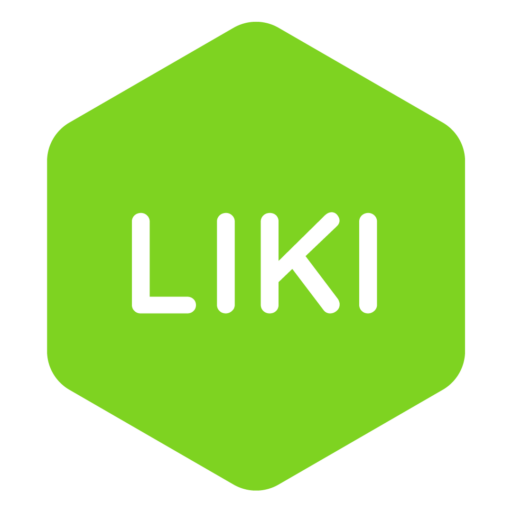What is a Storybook? When is it used? What are its pros and cons. How it can benefit our business? Let’s take a glance at this popular tool and check its potential.
What is a Storybook?
Storybook is a popular open source tool for building and testing UI components in isolation, without the need for a full application. It provides a sandbox for creating, visualizing, and documenting User Interface components, and allows developers to see how the components will look and behave in different states, making it easier to catch and fix issues early in the development process. Storybook is used by frontend developers and designers to develop components faster, improve the quality of their code, and ensure a consistent look and feel throughout the application.
A short history of Storybook
Storybook was first released in 2014 by Michael Shilman, with the goal of making it easier to develop and test components in isolation from the rest of the application.
Since its initial release, Storybook has gained popularity among front-end developers and has become a widely used tool for developing User Interface components in frameworks and libraries. The tool has continued to evolve and expand, with the addition of new features, such as add-ons and plugins, and support for modern front-end development practices, such as automated testing and continuous integration and deployment.
Today, Storybook is maintained by a large and active community of developers, and is widely used by teams and organizations to develop high-quality User Interface components and improve the development process. It has become an essential tool for front-end development, and continues to grow and evolve as the front-end development landscape evolves.
When Storybook development is used for?
Overall, Storybook is a useful tool for any development project that involves the development of UI components, providing a centralized environment for developing, testing, and documenting components, and making it easier to improve the quality of the components and the overall user experience. Simply speaking, Storybook improves the efficiency and organization of any UI development.
Pros of using Storybook:
- Isolation of components: Storybook allows developers to work on individual components in isolation, which makes it easier to focus on specific parts of the user interface.
- Improved development speed: By providing a sandbox for building, testing and visualizing components, Storybook makes it easier to catch and fix issues early in the development process, reducing the overall time required to build a UI.
- Consistent look and feel: Storybook helps ensure that the look and feel of the components is consistent throughout the application, improving the overall user experience.
- Better collaboration: Storybook makes it easier for designers, front-end developers, and stakeholders to understand and evaluate the components, improving collaboration and communication.
- Improved documentation: Storybook provides a visual interface for documenting the components and their behavior, making it easier to keep track of design and behavior changes.
Cons of using Storybook:
- Initial setup: Setting up Storybook for a project can be time-consuming, especially for large and complex projects.
- Learning curve: The concept and use of Storybook may be unfamiliar to some developers, and may require some time to get used to.
- Resource requirements: Running Storybook can be resource-intensive, especially for large projects, and may require additional resources to maintain optimal performance.
- Limited integration: While Storybook can integrate with many front-end frameworks and libraries, it may not be compatible with all tools and systems.
- Additional layer of complexity: While Storybook provides many benefits, it can also add another layer of complexity to the development process. It may be challenging to ensure that the components developed in Storybook match the behavior of the components in the final application.
What are some best practices for using Storybook in a team development environment?
Centralized Component Library: Use Storybook to create a centralized library of UI components that can be reused and shared across different parts of the application.
Document components: Use Storybook’s documentation feature to provide clear and concise documentation of the components, their behavior, and any design changes. This helps to ensure that everyone on the team has a clear understanding of the components and their intended behavior.
Use Add-ons and plugins: Take advantage of Storybook’s add-ons and plugins to extend the functionality of Storybook and improve the development process. This can include features such as testing, debugging, visual testing, and automated documentation.
Automate Workflows: Use automated tools and workflows to streamline the development process and minimize manual tasks. This can include continuous integration and deployment, code linting, and automated testing.
Code Reviews: Use code reviews to ensure that the components developed in Storybook match the intended design and behavior, and to catch any issues early in the development process.
Consistent Naming and Style: Establish and maintain a consistent naming convention and style for components, to ensure that the components are easy to understand and maintain.
Regular updates: Regularly update the Storybook to ensure that the components are up-to-date and consistent with the latest design and behavior changes.
By following these best practices, teams can use Storybook to improve collaboration, streamline the development process, and ensure that the components are of high quality and consistent with the intended design and behavior.
Can Storybook be used with different front-end frameworks and libraries, such as React, Vue, and Angular?
Yes, Storybook can be used with them. Storybook provides official support for these popular frameworks and libraries, and there are many resources available for integrating Storybook into projects that use these technologies. Additionally, there is a large and active community of developers who have experience with using Storybook with various frameworks and libraries, making it easier to find help and guidance when needed. Storybook’s modular architecture and plugin system also allow for custom integrations with other technologies, making it possible to use Storybook with a wide range of front-end development environments.
What features does Storybook provide for testing and debugging UI components?
Live Preview: Storybook provides a live preview of components, allowing developers to see the changes they make to the components in real-time. This makes it easier to test and debug the components, and to see the impact of changes to the components on the overall design and behavior.
Automated Testing: Storybook integrates with popular testing frameworks, such as Jest and Mocha, allowing developers to run automated tests on the components as they are developed. The tests can be run automatically each time a change is made to the components, helping to catch any issues early in the development process.
Knobs: Storybook’s “knobs” feature allows developers to dynamically update the props of a component and see the changes in real-time. This makes it easier to test and debug components, and to understand how they behave in different scenarios.
Actions: Storybook’s “actions” feature allows developers to log events and interactions within a component, making it easier to understand how the component behaves and to identify any issues.
Add-ons: Storybook provides a wide range of add-ons that can be used to extend its functionality and improve the testing and debugging process. For example, the “storybook-addon-jest” add-on allows developers to run Jest tests within Storybook, and the “storybook-addon-chromatic” add-on allows developers to test the components in different environments and devices.
Docs: Storybook’s documentation feature provides clear and concise information about the components, their behavior, and any design changes. This helps to ensure that everyone on the team has a clear understanding of the components and their intended behavior, and makes it easier to identify and fix any issues.
In summary, Storybook provides a wide range of features for testing and debugging UI components, from live previews and automated testing, to knobs, actions, add-ons, and documentation, making it easier to develop high-quality and reliable components.
How does Storybook support collaboration between designers and developers in a project?
Storybook supports collaboration between designers and developers in a project in several ways:
Visual Interface: Storybook provides a visual interface for previewing UI components and their different states, making it easier for designers and stakeholders to understand and evaluate the components. This helps to facilitate communication and collaboration between designers and developers.
Documentation: Storybook’s documentation feature allows developers to document the components, their behavior, and any design changes, making it easier for designers and stakeholders to keep track of the components and their design and behavior.
Easy Sharing: Storybook allows designers and developers to share and preview components with stakeholders and clients, which can help to get feedback and approval early in the development process.
Isolation: Storybook’s isolation of components makes it easier for developers to work on individual components without the need for a full application, which can help to minimize distractions and improve focus.
Testing and Debugging: Storybook provides features for testing and debugging UI components, making it easier for developers to identify and fix issues early in the development process, which can help to improve collaboration and communication between developers and designers.
Version Control: Storybook’s versioning and rollback features make it easier for designers and developers to keep track of changes to the components, improving collaboration and communication.
Overall, Storybook helps to improve collaboration between designers and developers by providing a centralized environment for building UI components, testing, and documenting them, making it easier to understand, evaluate, and share components throughout the development process.
Storybook services for your business
Storybook provides several services that can benefit businesses:
UI Component Library: Storybook can be used to create a centralized library of User Interface components that can be reused and shared across different parts of the application. This reduces the amount of code that needs to be written and improves the consistency and quality of the components.
Collaboration: Storybook makes it easy for designers and developers to work together on the components, ensuring that the components are of high quality and consistent with the intended design and behavior. The documentation feature of Storybook provides clear and concise information about the components, reducing the need for time-consuming manual documentation processes within our Design System.
Automated Testing: Storybook integrates with popular testing frameworks, such as Jest and Mocha, allowing developers to run automated tests on the components as they are developed. This helps to catch any issues early in the development process, reducing the time and effort needed to fix them.
Sharing and Feedback: Storybook makes it easy to share components with stakeholders and clients, to get feedback and approval early in the development process. The visual interface of Storybook makes it easy for stakeholders to understand and evaluate the components, reducing the time and effort needed to get feedback and make changes.
Improved Efficiency: By providing a centralized environment for developing and testing UI components, Storybook streamlines the development process, reducing the time and effort needed to develop high-quality components.
Increased Productivity: By improving collaboration, reducing manual processes, and streamlining the development process, Storybook increases productivity and helps businesses to get their products to market faster.
In summary, Storybook provides a wide range of services that can benefit businesses, check what Liki can do for you. Investigate our software development services and technologies: Python development, Java Development, web development, Symphony development and others.



